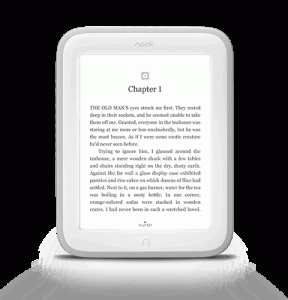 One thing that I find fascinating about the innovation space is that when it comes to innovation is the outcomes of competition within an industry. I talk alot about it being about collecting and connecting the dots, and in any industry any company looking to survive and thrive, must continuously innovate and that means continuously collecting and connecting dots.
One thing that I find fascinating about the innovation space is that when it comes to innovation is the outcomes of competition within an industry. I talk alot about it being about collecting and connecting the dots, and in any industry any company looking to survive and thrive, must continuously innovate and that means continuously collecting and connecting dots.
These dots can be technology advances in different component technologies, these dots can be changing and emerging trends (demographic, psychological, sociological, societal, etc.), they can be changes in customer needs, or a whole host of other bits of interesting information that connect together to create new unique and differentiated customer insights to power the next round of potential innovations for a company.
And because all companies to survive and thrive must continue to innovate, that means that every single company within an industry is constantly collecting and connecting dots. Taken a bit further, all of the companies in the industry tend to structure themselves in similar ways, hire similar people and employ similar market research and new product development approaches. This means in many cases that they are collecting and connecting THE SAME DOTS.
What’s fascinating though is that in many cases even though all of the companies in the industry might be collecting and connecting the EXACT SAME DOTS (or very close to the same dots), they can arrive at very different interpretations of what connections are interesting and which potential insights they want to use to power their next round of potential innovations.
This was never more apparent than the difference in a couple of new product announcements that arrived in my inbox last week from Barnes & Noble and Amazon. Obviously these two companies are looking to gain the upper hand in the digital books and e-book reader battle to remain a leader (or at least relevant), and so it is fascinating to see the different connections they made.
Barnes & Noble was announcing a new Nook called the nook GlowLight. It is a low cost e-reader (about $119) that touts as its two main benefits:
- A higher resolution display
- A method of lighting that makes it easier to read in low light situations
Amazon meanwhile was announcing a new product called Kindle Matchbook. It is a new digital product offering that has two main benefits:
- People buying printed books from Amazon can UPGRADE a qualifying book purchased back to 1995 with an ebook version for anywhere ranging from FREE to $2.99
- About 10,000 titles from publishers including Macmillan, Houghton Mifflin Harcourt, HarperCollins, Marvel and Wiley were eligible at launch
Both companies sell physical books. Both companies sell digital books. Both companies are constantly collecting and connecting dots that they believe will give them a leg up in the battle for sales supremacy, but yet their latest salvos in this battle have gone in completely different directions.
Which one will be more impactful?
Which one is harder to copy?
And what are your thoughts about how they could’ve gone in such wildly different directions in this latest battle in the ebook war?
I have my own thoughts, but I’d love to hear yours! 😉
Please sound off in the comments.

![]() Sign up here to get Human-Centered Change & Innovation Weekly delivered to your inbox every week.
Sign up here to get Human-Centered Change & Innovation Weekly delivered to your inbox every week.